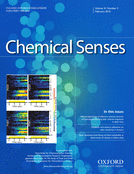
“Cannabis sativa, is also popularly known as marijuana, has been cultivated and used for recreational and medicinal purposes for many centuries.
The main psychoactive content in cannabis is Δ9-tetrahydrocannabinol (THC). In addition to plant cannabis sativa, there are two classes of cannabinoids—the synthetic cannabinoids (e.g., WIN55212–2) and the endogenous cannabinoids (eCB), anandamide (ANA) and 2-arachidonoylglycerol (2-AG).
The biological effects of cannabinoids are mainly mediated by two members of the G-protein-coupled receptor family, cannabinoid receptors 1 (CB1R) and 2 (CB2R). The endocannabinoids, cannabinoid receptors, and the enzymes/proteins responsible for their biosynthesis, degradation, and re-updating constitute the endocannabinoid system.
In recent decades, the endocannabinoid system has attracted considerable attention as a potential therapeutic target in numerous physiological conditions, such as in energy balance, appetite stimulation, blood pressure, pain modulation, embryogenesis, nausea and vomiting control, memory, learning and immune response, as well as in pathological conditions such as Parkinson’s disease, Huntington’s disease, Alzheimer’s disease, and multiple sclerosis.
The major goal of this Special Issue is to discuss and evaluate the current progress in cannabis and cannabinoid research in order to increase our understanding about cannabinoid action and the underlying biological mechanisms and promote the development cannabinoid-based pharmacotherapies.
Overall, the present special issue provides an overview and insight on pharmacological mechanisms and therapeutic potentials of cannabis, cannabinoid receptors, and eCB system. I believe that this special issue will promote further efforts to apply cannabinoid ligands as the therapeutic strategies for treating a variety of diseases.”
 “Anorexia nervosa (AN) is a psychiatric disorder with a high mortality and unknown etiology, and effective treatment is lacking.
“Anorexia nervosa (AN) is a psychiatric disorder with a high mortality and unknown etiology, and effective treatment is lacking.

 “Cancer-related cachexia and anorexia syndrome (CACS) is a common phenomenon in cancer patients. Cannabis has been suggested to stimulate appetite but research on this issue has yielded mixed results. The current study aimed to evaluate the effect of dosage-controlled cannabis capsules on CACS in advanced cancer patients.
“Cancer-related cachexia and anorexia syndrome (CACS) is a common phenomenon in cancer patients. Cannabis has been suggested to stimulate appetite but research on this issue has yielded mixed results. The current study aimed to evaluate the effect of dosage-controlled cannabis capsules on CACS in advanced cancer patients.
 “Despite the growing knowledge on the functional relationship between an altered endocannabinoid (eCB) system and development of anorexia nervosa (AN), to date no studies have investigated the central eCB tone in the activity-based anorexia (ABA) model that reproduces key aspects of human AN.
“Despite the growing knowledge on the functional relationship between an altered endocannabinoid (eCB) system and development of anorexia nervosa (AN), to date no studies have investigated the central eCB tone in the activity-based anorexia (ABA) model that reproduces key aspects of human AN.


 “The herb Cannabis sativa has been traditionally used in many cultures and all over the world for thousands of years as medicine and recreation.
However, because it was brought to the Western world in the late 19th century, its use has been a source of controversy with respect to its physiological effects as well as the generation of specific behaviors. In this regard, the CB1 receptor represents the most relevant target molecule of cannabinoid components on nervous system and whole-body energy homeostasis.
Thus, the promotion of CB1 signaling can increase appetite and stimulate feeding, whereas blockade of CB1 suppresses hunger and induces hypophagia.
Taste and flavor are sensory experiences involving the oral perception of food-derived chemicals and drive a primal sense of acceptable or unacceptable for what is sampled. Therefore, research within the last decades focused on deciphering the effect of cannabinoids on the chemical senses involved in food perception and consequently in the pattern of feeding.
In this review, we summarize the data on the effect of cannabinoids on chemical senses and their influences on food intake control and feeding behavior.”
“The herb Cannabis sativa has been traditionally used in many cultures and all over the world for thousands of years as medicine and recreation.
However, because it was brought to the Western world in the late 19th century, its use has been a source of controversy with respect to its physiological effects as well as the generation of specific behaviors. In this regard, the CB1 receptor represents the most relevant target molecule of cannabinoid components on nervous system and whole-body energy homeostasis.
Thus, the promotion of CB1 signaling can increase appetite and stimulate feeding, whereas blockade of CB1 suppresses hunger and induces hypophagia.
Taste and flavor are sensory experiences involving the oral perception of food-derived chemicals and drive a primal sense of acceptable or unacceptable for what is sampled. Therefore, research within the last decades focused on deciphering the effect of cannabinoids on the chemical senses involved in food perception and consequently in the pattern of feeding.
In this review, we summarize the data on the effect of cannabinoids on chemical senses and their influences on food intake control and feeding behavior.”